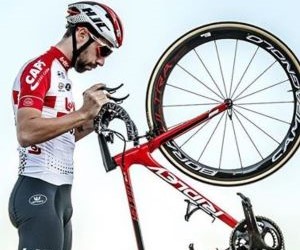Learn how to choose between clipless and flat pedals by comparing efficiency, control, comfort, and riding style to find the right setup for your needs.
WHAT ARE THE MOST FAMOUS CYCLING STAGE RACES?
Cycling stage races are the ultimate test of endurance, strategy, and resilience. Unlike one-day classics, these multi-stage battles span weeks, covering mountains, sprints, and time trials. They define champions and inspire fans worldwide. The most famous races, like the Tour de France, Giro d’Italia, and Vuelta a España, are part of the Grand Tours, but other stage races such as Paris–Nice and the Tour de Suisse also shape the cycling calendar. This article explores their history, unique challenges, and why they capture the imagination of millions.

The Grand Tours
The Grand Tours are the crown jewels of professional cycling. Each lasts three weeks, testing every aspect of a rider’s skill: climbing, sprinting, time-trialing, and recovery. Winning one defines a career; conquering all three cements legendary status.
Tour de France
First held in 1903, the Tour de France is the most famous race in cycling history. It spans over 3,000 kilometers across France, featuring iconic climbs like Alpe d’Huez and Mont Ventoux. The yellow jersey, awarded to the general classification leader, symbolizes global cycling supremacy. The Tour’s prestige extends beyond sport—it’s a cultural event watched by millions each July.
Giro d’Italia
The Giro, launched in 1909, is known for its unpredictable weather and punishing mountain stages through the Dolomites and Alps. Riders fight for the maglia rosa, the pink jersey. The Giro combines breathtaking scenery with tactical chaos, where snow-capped summits and steep gradients create drama unmatched by other races.
Vuelta a España
The youngest Grand Tour, founded in 1935, the Vuelta is famous for steep gradients and late-season timing. The red jersey rewards the strongest climbers, often on brutal ascents like the Angliru. The Vuelta has become a proving ground for rising stars and a last chance of the season for veterans chasing glory.
Tour de France: the pinnacle of global cycling
Giro d’Italia: beauty, chaos, and brutal climbs
Vuelta a España: steep gradients and fierce battles
Other iconic stage races
Beyond the Grand Tours, shorter stage races play critical roles in the pro calendar. They test form, prepare riders for bigger events, and provide their own unique prestige. Many of these races act as springboards for future champions.
Paris–Nice
Nicknamed the “Race to the Sun,” Paris–Nice bridges winter and spring, starting in cold northern France and ending on the sunny Mediterranean coast. Held since 1933, it’s a key early-season test where riders reveal form and shape rivalries ahead of the Grand Tours.
Critérium du Dauphiné
The Dauphiné is the dress rehearsal for the Tour de France. Its mountain stages and time trials mirror the Tour’s demands, making it a predictor of July success. Past winners like Chris Froome and Miguel Indurain have gone on to dominate the Tour weeks later.
Tour de Suisse
The Tour de Suisse offers Alpine drama in a compact package. Known for its challenging climbs and unpredictable weather, it’s a prestigious win in its own right and a vital preparation event. Swiss fans line the roads to celebrate one of the sport’s toughest tests.
Paris–Nice: early-season proving ground
Dauphiné: Tour de France dress rehearsal
Tour de Suisse: Alpine challenge with prestige
Why stage races matter
Stage races embody the essence of endurance sport—consistency, adaptability, and resilience. Unlike one-day classics, success requires mastering multiple terrains and recovering daily. They challenge individuals and teams, blending personal ambition with tactical cooperation.
Tactical depth
Stage races are chess games on wheels. Teams protect leaders, sprinters chase stage wins, and climbers target mountains. Breakaways, time trials, and weather shifts constantly reshape the race narrative. This dynamic unpredictability keeps fans engaged from the prologue to the final stage.
Global impact
Grand Tours and other stage races transcend sport, generating tourism, economic growth, and cultural pride. Towns along the routes become global showcases, blending athletic drama with local heritage. The visibility attracts sponsors and fuels cycling’s expansion into new markets.
Inspiration for riders
For amateur cyclists, stage races represent the ultimate aspiration. Many Gran Fondo and amateur tours mimic pro formats, allowing everyday riders to experience the rhythm of multi-day racing. This democratization of stage racing culture inspires millions to train, ride, and dream bigger.
Ultimately, stage races are more than competitions—they are epic narratives of human endurance, tactical brilliance, and global spectacle. Their history, prestige, and drama ensure they remain the beating heart of professional cycling.
YOU MAY ALSO BE INTERESTED






